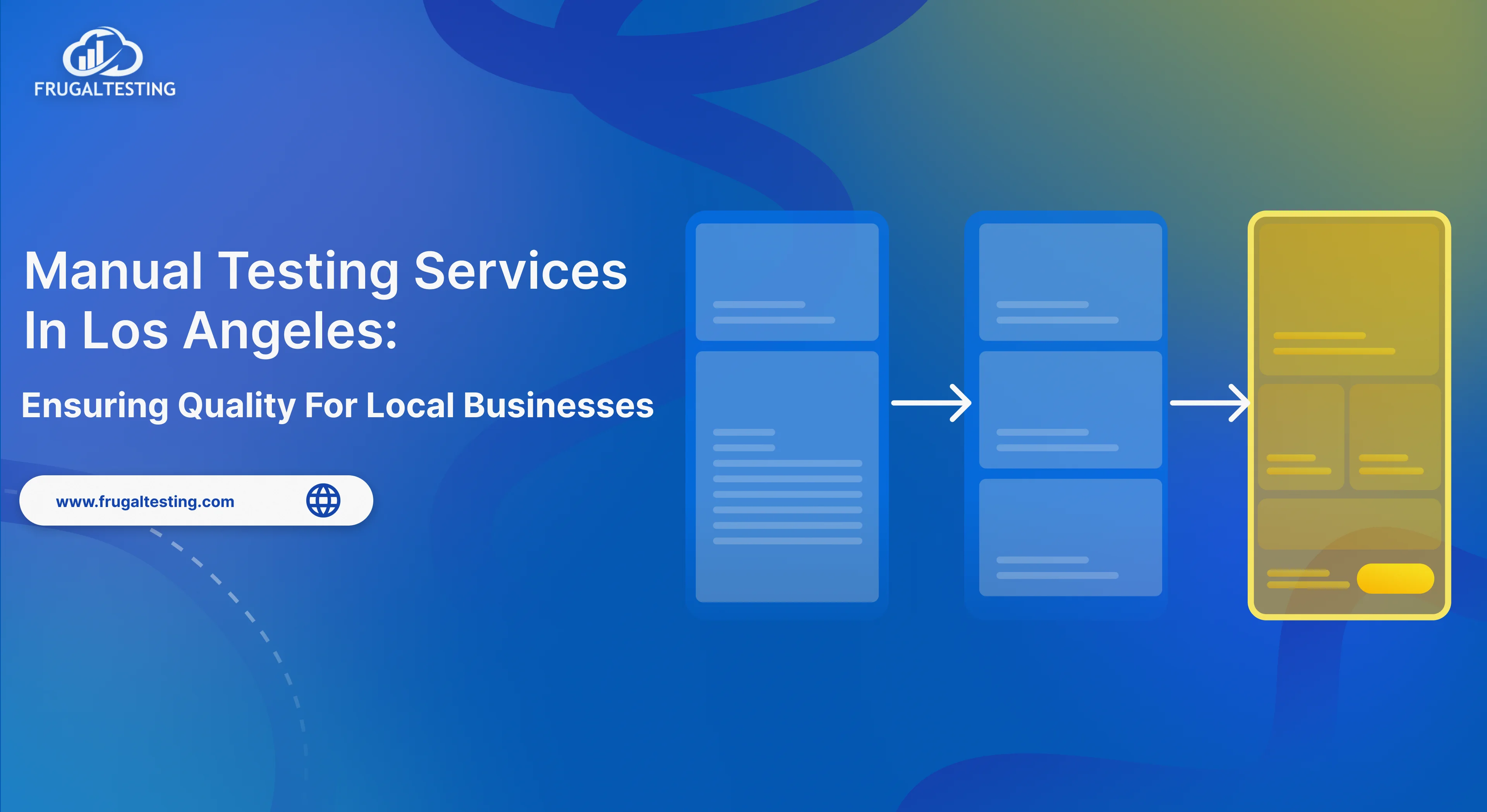Before diving into the specifics, it is important to understand what test strategies and plans entail. Test strategies outline the overall approach to testing, including the scope, objectives, resources, and timelines. They provide a high-level view of how testing will be conducted to achieve desired outcomes. 🎯
On the other hand, test plans are detailed documents that define the specific tests to be conducted, the test environment setup, the test cases, and any risks or issues that need to be addressed during testing. 📝
📌 Test Strategy Overview: A test strategy guides testing with methodologies and best practices, considering project goals and risks.
📌 Key Elements: It includes testing objectives, scope, approach, environment, defect management, automation, risk assessment, and reporting.
📌 Influencing Factors: Project requirements, methodology, technical setup, and organizational culture shape the test strategy.
📌 Benefits: Alignment with goals, structured testing, enhanced coverage, early defect detection, and resolution.
📌 Strategy vs. Plan: The strategy guides, while the plan details specific testing activities.
📌 Best Practices: Define objectives clearly, tailor to project needs, align with standards, involve stakeholders, and update regularly.
What is a Test Plan?
A test plan serves as a detailed roadmap outlining the approach, scope, and objectives of software testing. It defines the scope of testing, including various aspects such as performance testing, security testing, and regression testing.
The testing team, comprising developers and testers, collaborates on a robust test plan meeting project specs and quality standards. This includes aspects of the testing strategy like unit, integration, manual, and load testing⚙️ for thorough coverage and effective execution.

Importance of Having a Test Plan
The significance of a test plan cannot be magnified in the software testing process. It provides a structured approach to testing, outlining the basic testing objectives, activities, and programs. It is a valuable tool for communication and collaboration among team members. Moreover, a well-crafted test plan includes risk analysis, maintaining testing standards, and a clear process for bug report generation and resolution.

Types of Test Plans
Test plans can vary based on the nature of the project and the testing requirements. Common types include:
- Level-specific test plan: This plan outlines strategies for Unit testing, Integration testing, Regression Testing, Functional Testing, Security testing, Mobile App testing and System testing.
- Type-specific test plan: This plan focuses on critical aspects like performance parameters.⚙️
- Master test plan: Serving as a comprehensive quality assurance (QA) test plan, it offers overarching details of the testing process.📋
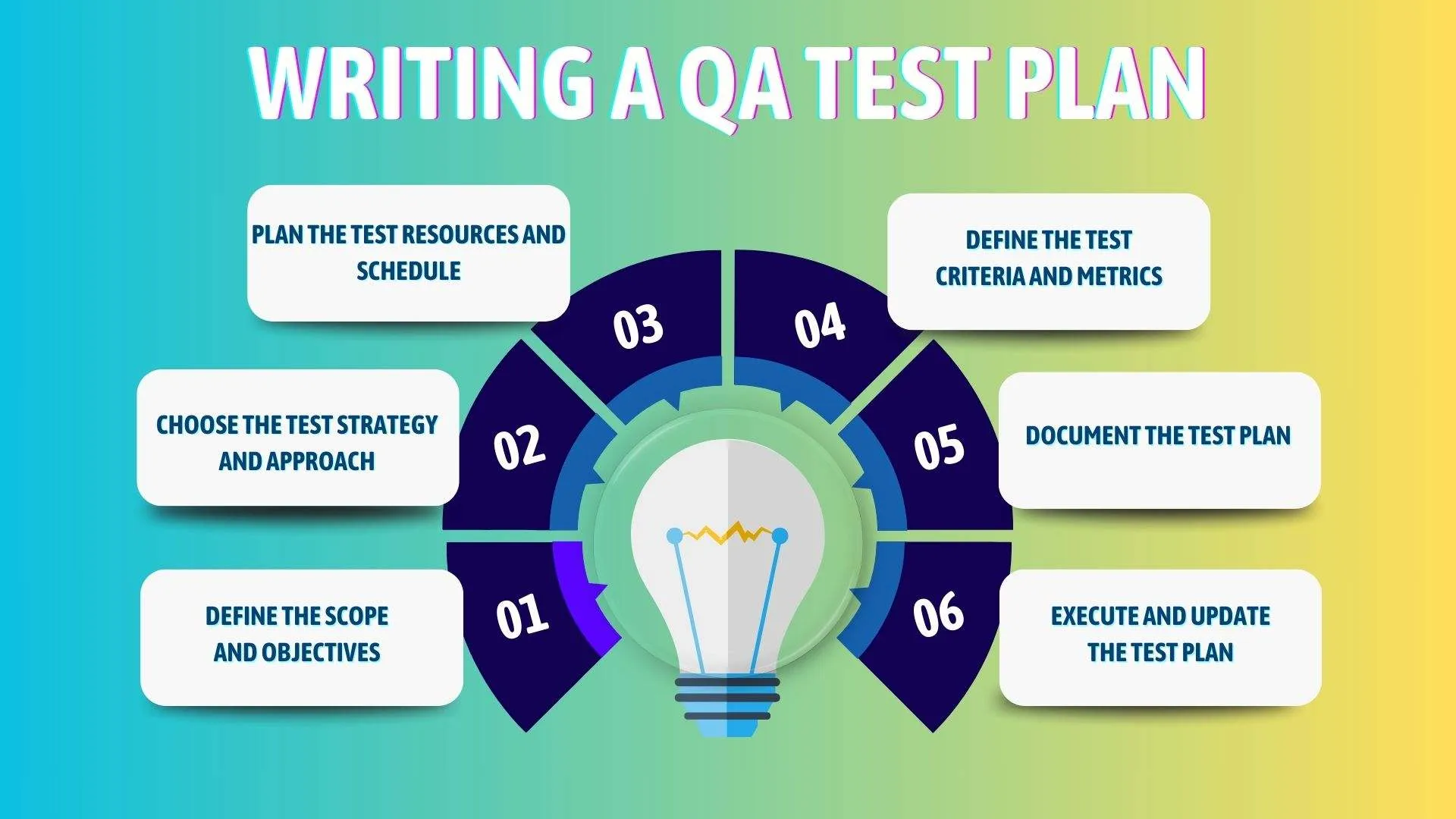
Uses of Test Plans
Test plans serve as comprehensive reference documents for the testing team, guiding them throughout the software testing life cycle(STLC). They facilitate effective communication and coordination among team members and stakeholders, ensuring transparency and accountability.
In software testing, test plans play a crucial role by:
- Guiding the testing process: They outline testing approaches, scope, pass/fail criteria, and resource needs, clarifying roles and schedules for team members.🛠️
- Ensuring resource availability: Test plans ensure necessary tools and resources are ready for testing, minimizing delays.
- Serving as a bridge between teams: Test plans facilitate communication among developers, testers, and stakeholders, ensuring alignment on requirements and changes.
- Managing scope: They prevent testing beyond specified modules or functionalities, keeping testing focused and efficient.
Estimating effort and managing risk: Test plans help estimate testing effort and cost, while also guiding testers in identifying and mitigating risks throughout the testing process.🔍
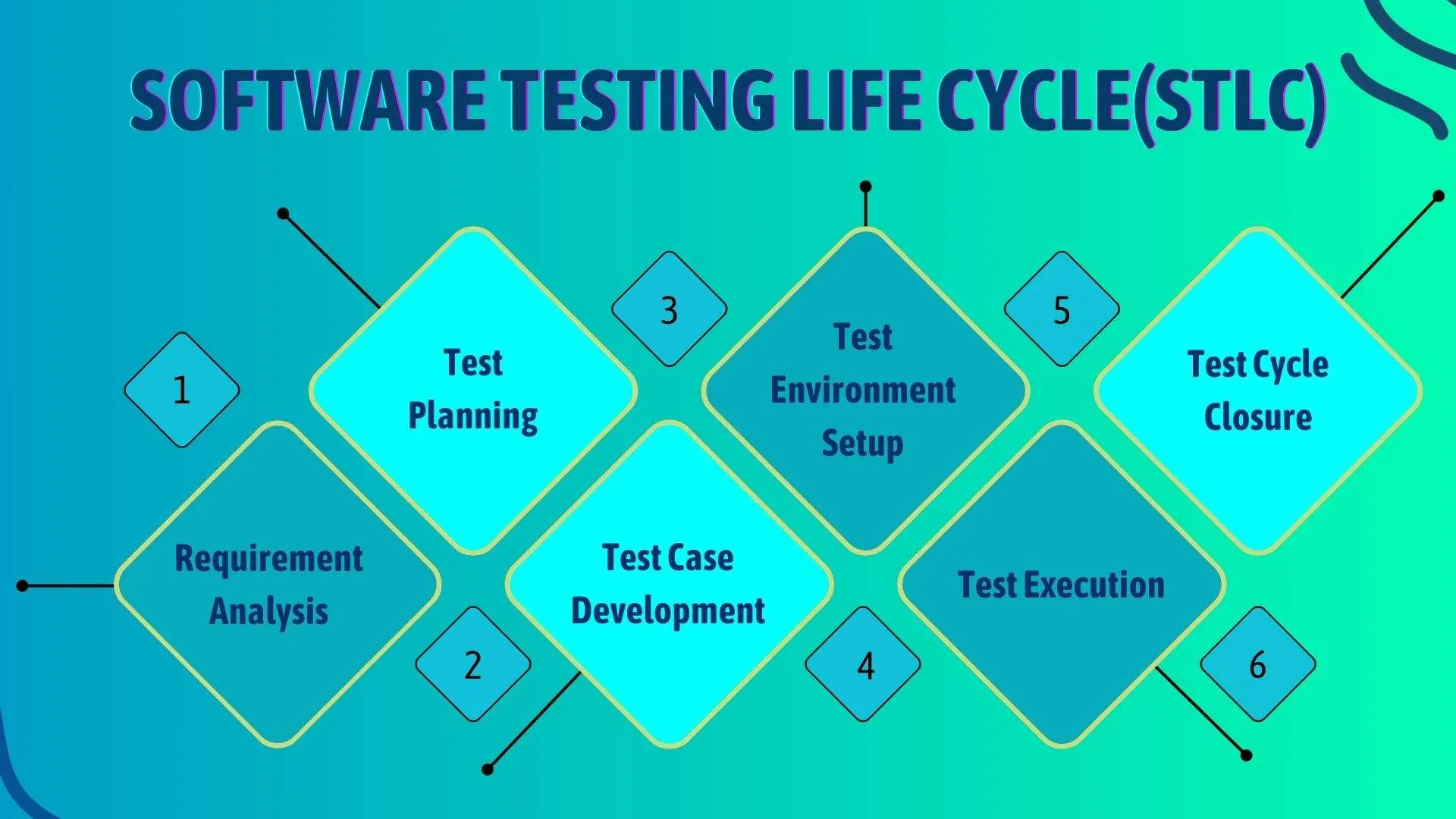
How to Create a Test Plan?
Creating a test plan is a step-by-step process in software testing. It starts with gathering project requirements and defining what needs to be tested. Then, we figure out how to test it by selecting the right methods and techniques.🌟
A test plan answers fundamental questions such as:
- Analyze the Product: Understanding the product's features and functionalities.
- Design Test Strategy: Developing a comprehensive approach for testing.
- Design Test Objectives: Defining specific goals for each testing phase.
- Design Test Criteria: Setting criteria for success and failure of tests.
- Resource Planning: Identifying and allocating necessary resources.
- Plan Test Environment: Preparing the environment setup required for testing.
- Schedule & Estimation: Establishing timelines and estimating the duration of testing activities.
- Determine Test Deliverables: List the expected outcomes and artefacts from the testing process.
The testing team works together to set up the testing environment, allocate resources, and create detailed test scenarios and cases. Throughout the testing phase, we keep an eye on progress, analyze results, and adjust the plan as needed to make sure we cover everything and manage defects effectively.🛠️

How Should a Test Plan Be Written?
A well-written test plan should be clear, concise, and tailored to the specific project requirements. It should include detailed information about the testing approach, methodologies, test scenarios, and success criteria, allowing for comprehensive coverage of the system under test.

Key Elements of a Test Plan
A comprehensive test plan should include the following key elements:
- Introduction: Provides an overview of the test plan and its objectives.
- Scope and Approach: Defines the scope of testing and the approach to be followed. 🛠️
- Testing Environment: Describes the hardware, software, and network configurations required for testing. 💻
- Testing Objectives: Clearly defines the goals and objectives of the testing effort.
- Testing Activities: Outlines the specific testing activities to be performed, including test design, execution, and evaluation. 🛠️
- Testing Schedule: Specifies the timeline for each testing phase, including milestones and deliverables.
- Testing Resources: Identifies the human, technical, and financial resources required for testing. 💼
- Risk Management: Identifies potential risks and mitigation strategies to minimize their impact on the testing process. ⚠️
- Exit Criteria: Defines the conditions that must be met for testing to be considered complete and successful.
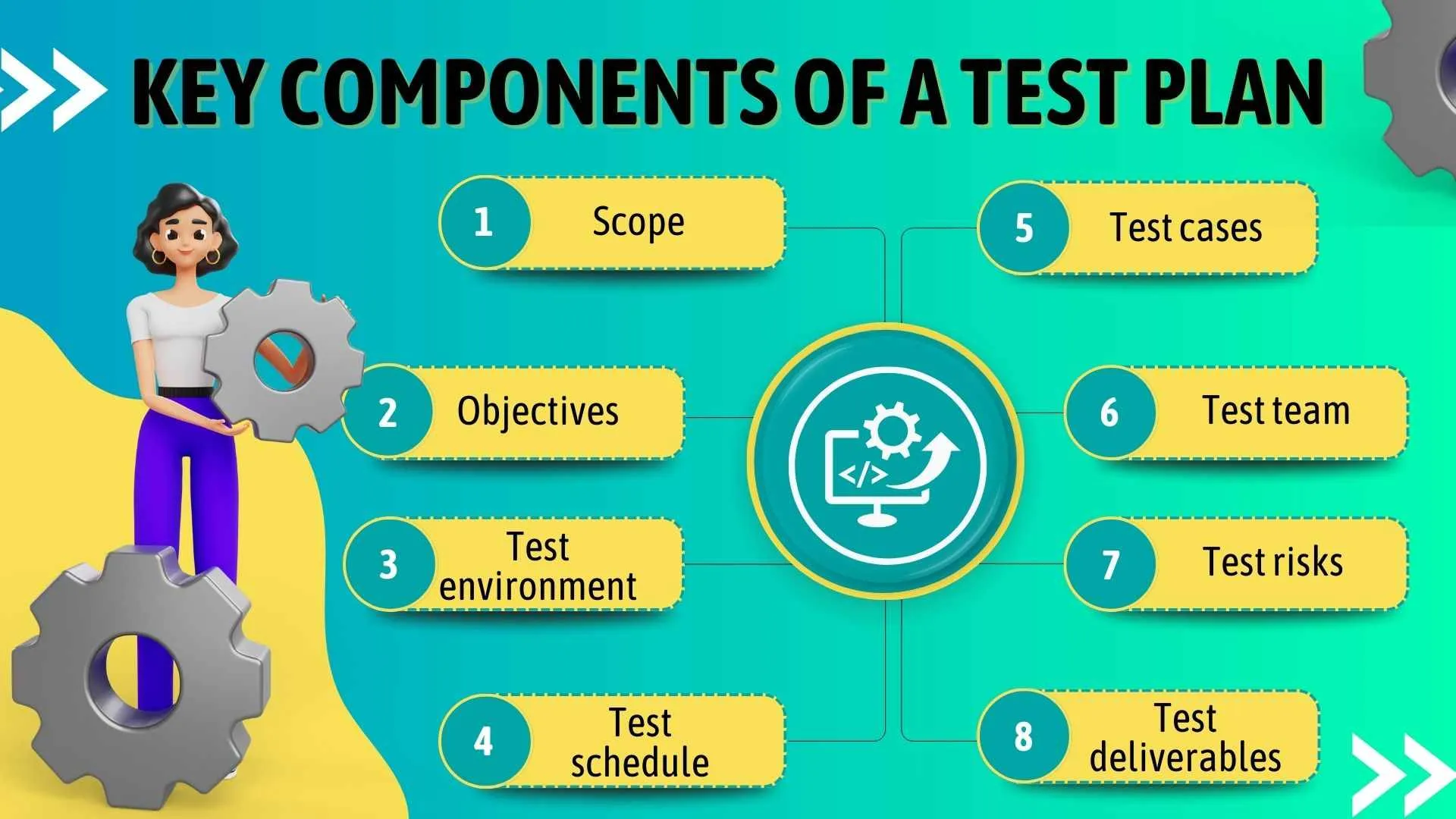
What Are the Entry and Exit Criteria for a Test Plan?
The requirements that must be fulfilled before testing can start, such as having test resources available and finishing required tasks, are outlined in the entry criteria.🚀
Exit criteria specify the conditions that indicate the completion of testing, and signaling readiness for the next phase of the project. By establishing clear entry and exit criteria, the testing team ensures that testing efforts are focused and aligned with project goals and objectives.

What is a Test Strategy?
A test strategy outlines the overarching approach and principles governing the testing process, incorporating methodologies, techniques, and best practices. It considers project goals, constraints, and risk factors.📝
The test strategy is developed collaboratively by the testing team, with input from stakeholders, subject matter experts, and the development team, ensuring alignment with project objectives and quality goals.
This comprehensive strategy guides the testing procedure for various aspects including business analysts' inputs, testing of mobile applications, and analytical testing at the project level.

Importance of Test Strategy in Software Testing
A well-defined test strategy provides a strategic direction for the testing activities, ensuring alignment with the project objectives and quality goals.
This involves defining the testing scope and implementing continuous testing practices. It also includes incorporating user acceptance testing criteria, aligning with project plans, and adapting to development cycles, particularly in Agile development environments. 🔄
Key Elements of a Test Strategy
A comprehensive test strategy should include the following key elements:
- Testing Objectives: Clearly defines the goals and objectives of the testing effort, including the desired outcomes and success criteria. 🎯
- Test Scope and Coverage: Defines the scope of testing and the extent of test coverage, including the features and functionalities to be tested.
- Testing Approach: Outlines the overall approach and methodologies to be followed during testing, including the testing techniques, tools, and environments to be used.
- Test Environment: Describes the hardware, software, and network configurations required for testing, including any third-party integrations or dependencies.
- Test Automation: Specifies the criteria for selecting test automation tools and frameworks, as well as the scope and objectives of test automation efforts. 🤖
- Risk Assessment and Mitigation: Identifies potential risks and mitigation strategies to minimize their impact on the testing process, including contingency plans and fallback options. ⚠️
Reporting and Communication: Defines the reporting mechanisms and communication channels to be used for sharing testing progress, results, and insights with stakeholders. 📊

Factors Influencing the Test Strategy
Several factors influence the formulation of a test strategy, including:
- Project Requirements: The specific requirements and objectives of the project, including functional and non-functional requirements, performance goals, and regulatory compliance requirements. 📋
- Development Methodology: The chosen development methodology, such as Agile, Waterfall, or DevOps, influences the testing approach and timelines, as well as the level of collaboration between development and testing teams. 🔄
- Technical Environment: The hardware, software, and network configurations required for testing, including the availability of testing tools, testing environments, and third-party integrations.
Organizational Culture: The organizational culture and values, including the level of commitment to quality, the importance of testing in the software development process, and the willingness to invest in testing resources and infrastructure.
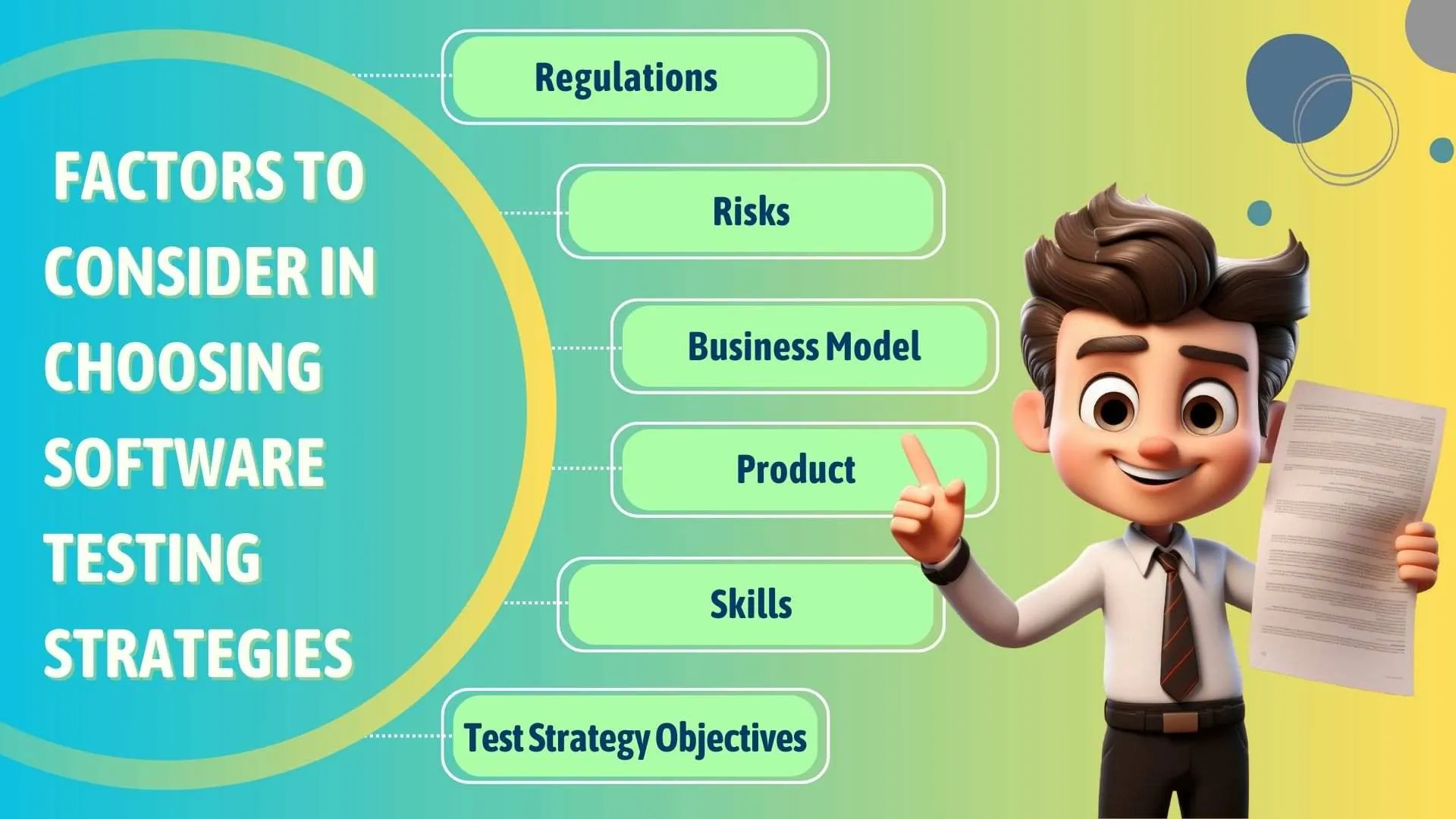
Benefits of Having a Test Strategy
A well-defined test strategy offers several benefits, including:
- Ensures alignment with project goals and objectives: By clearly defining the testing objectives and success criteria, a test strategy ensures that testing efforts are focused and aligned with project goals and objectives.🎯
- Provides a structured framework for testing activities: A test strategy outlines the overall approach and methodologies to be followed during testing, providing a structured framework for testing activities and ensuring consistency and repeatability across testing efforts.
- Enhances test coverage and effectiveness: A test strategy ensures that all critical aspects of the software are thoroughly tested, reducing the risk of defects and issues in production.📊
Facilitates early detection and resolution of defects: By defining the process for identifying, reporting, and tracking defects, a test strategy enables early detection and resolution of defects, minimizing their impact on project timelines and budgets.
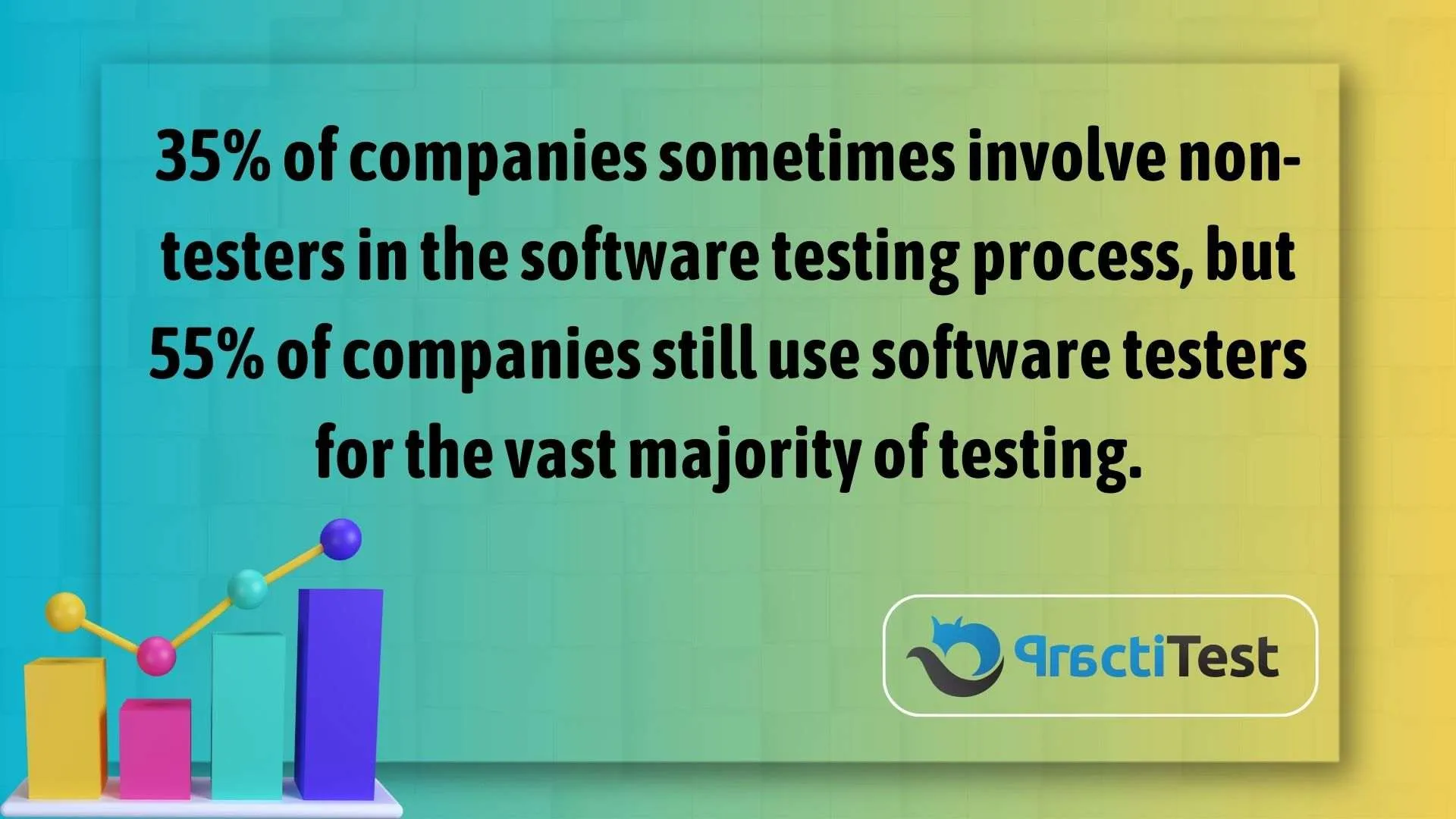
Test Strategy vs. Test Plan
Test Plan:
- Scope and Objective: A test plan outlines what, how, and when testing will be conducted for a software project, ensuring clarity and direction. It addresses the needs of the target audience and considers user expectations and security measures.
- Key Elements: It includes essential details like test plan ID, testing features, pass/fail criteria, team responsibilities, release schedule, etc. The plan ensures thorough testing through manual tests, step guides, and a systematic approach. 📋
- Specification Declaration: The test plan defines testing specifications, ensuring adherence to standards and high-quality software delivery. Flexibility enables updates and optimization of human and technical resources. 🛠️
- Risk Identification: Identifies potential risks, offering insights for proactive mitigation. Independence ensures focus on objectives, with tailored strategies for project goals.
- Project Level: Developed and aligned with project goals and timelines, providing a structured testing roadmap post-requirement sign-off. 📅
Test Strategy:
- Definition: A test strategy provides an overview of testing techniques and guidelines, ensuring a systematic approach. It sets the tone for testing, with a stable framework for consistency throughout the project lifecycle. 📝
- Key Elements: It guides the overall testing process, with a clear understanding of the organization's standards and methodologies. The strategy ensures comprehensive coverage, including desktop and mobile applications.
- Approach Declaration: It outlines testing priorities and techniques, ensuring structured testing. Derived from business requirements, it aligns with broader business goals and objectives. 🛠️
- Long-term Plan: It provides strategic guidance beyond individual projects, considering continuous testing efforts and the evolution of techniques over time.
Creation Timeline: Developed before the test plan, providing a strategic framework for testing activities. It ensures alignment with project goals from the outset. 📅

Best Practices for Test Strategy and Test Plan Documentation
To ensure effective and relevant test strategy and test plan documentation, follow these best practices:
- Clearly define testing objectives and scope: This ensures a common understanding of the testing effort and its goals among stakeholders.
- Tailor the test strategy and plan to specific project requirements: Align testing efforts with project goals and objectives for focused outcomes.
- Ensure alignment with industry standards and best practices: Conduct testing according to established guidelines and principles.
- Involve stakeholders and subject matter experts in the review process: Accurately reflect project requirements and stakeholder expectations.
Regularly update and revise the test strategy and plan: Keep them relevant throughout the software testing process, reflecting changes in project scope or requirements.

Tools Used to Manage Test Strategies and Plan
Tools for managing test strategies and plans include:
- Test management tools: Centralize test cases, plans, and results for collaboration and communication, such as JIRA and TestRail. 🛠️
- Requirements management tools: Capture, manage, and trace project requirements for alignment with testing efforts.
- Defect tracking tools: Identify, report, and track defects for timely resolution and closure. 🚧
- Automated Testing tools: Automate testing tasks like regression and performance testing for efficiency.
Collaboration platforms: Facilitate team communication and knowledge sharing on documentation. 🌐

How Does a Test Strategy Determine What and How Much Has to Be Tested?
A test strategy defines the scope and objectives of testing, including the features and functionalities to be tested, the testing techniques and methodologies to be employed, and the criteria for determining test coverage. It considers project goals, risk factors, and stakeholder expectations to determine the extent of testing required.

In Brief!!
Crafting effective test strategies and plans is essential for ensuring the quality and reliability of software products. 🔍 By understanding the key principles, components, and best practices outlined in this guide, organizations can streamline their testing processes and deliver superior software solutions that meet the expectations of end-users and stakeholders alike.
Remember that continuous improvement is key. 🔄 Regularly review your strategies/plans and post-testing cycles for learnings/feedback & incorporate them into future iterations! 📈
People also asked
👉🏻The Different Types of Testing Covered in a Typical Test Strategy?
A typical test strategy may cover various types of testing, including functional testing, performance testing, security testing, usability testing, and compatibility testing, among others.
👉🏻How Does Risk Assessment Fit into the Process of Creating a Test Strategy?
Risk assessment identifies potential testing risks and defines mitigation strategies, aiding in prioritizing testing activities and resource allocation.
👉🏻Which Comes First, the Test Strategy or the Test Plan?
The test strategy precedes the test plan, providing the overarching framework, while the test plan specifies testing details based on the strategy's guidelines.
👉🏻What are the Contents of a Test Plan?
A test plan typically includes objectives, scope, approach, resources, schedules, roles, risks, and approval criteria, among other details.
👉🏻How Does Security Testing Factor into the Strategy and Plan?
Security testing is crucial for software integrity and should be integrated into both the test strategy and test plan to identify vulnerabilities and implement protective measures.




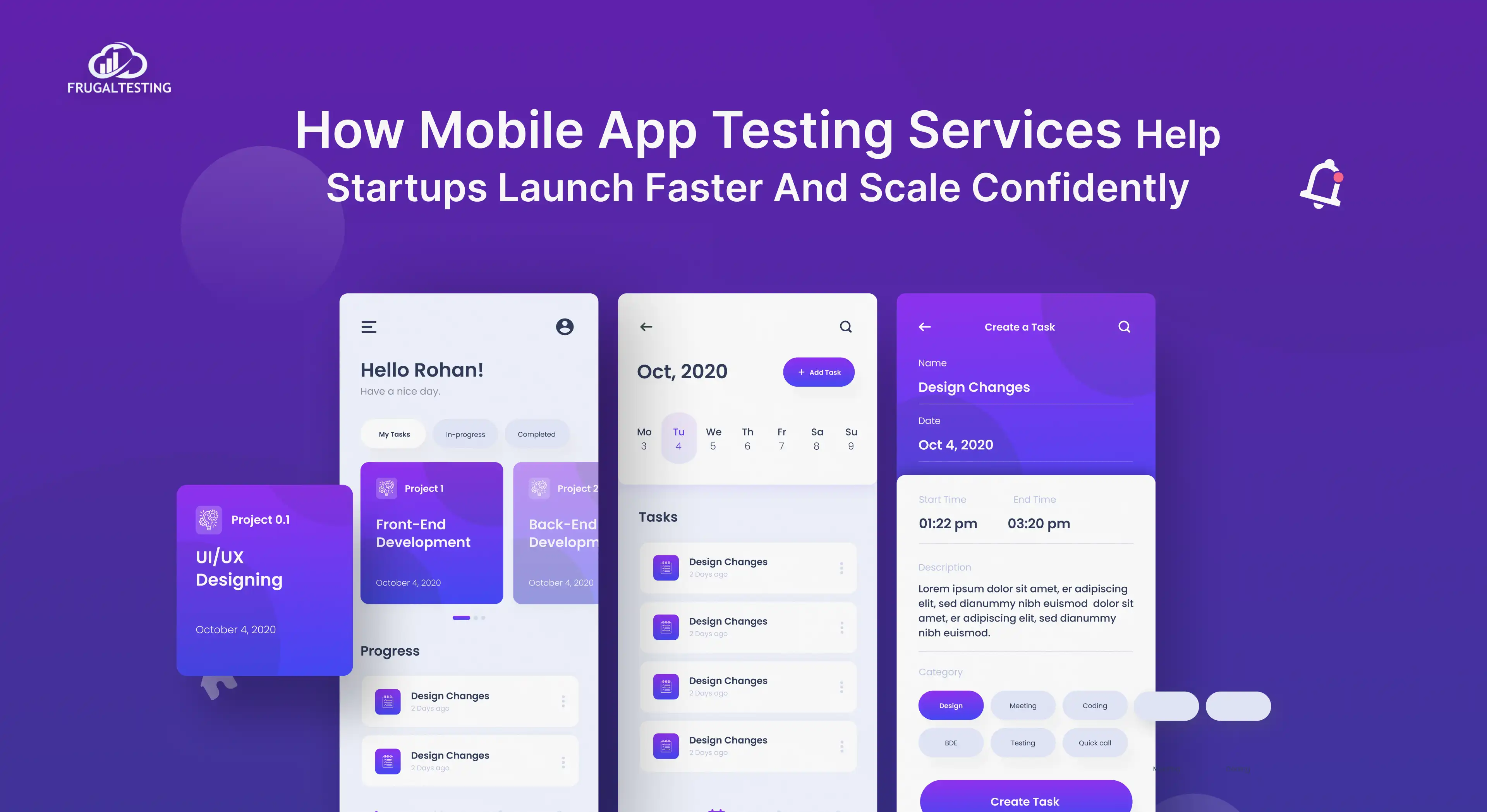
%201.webp)

